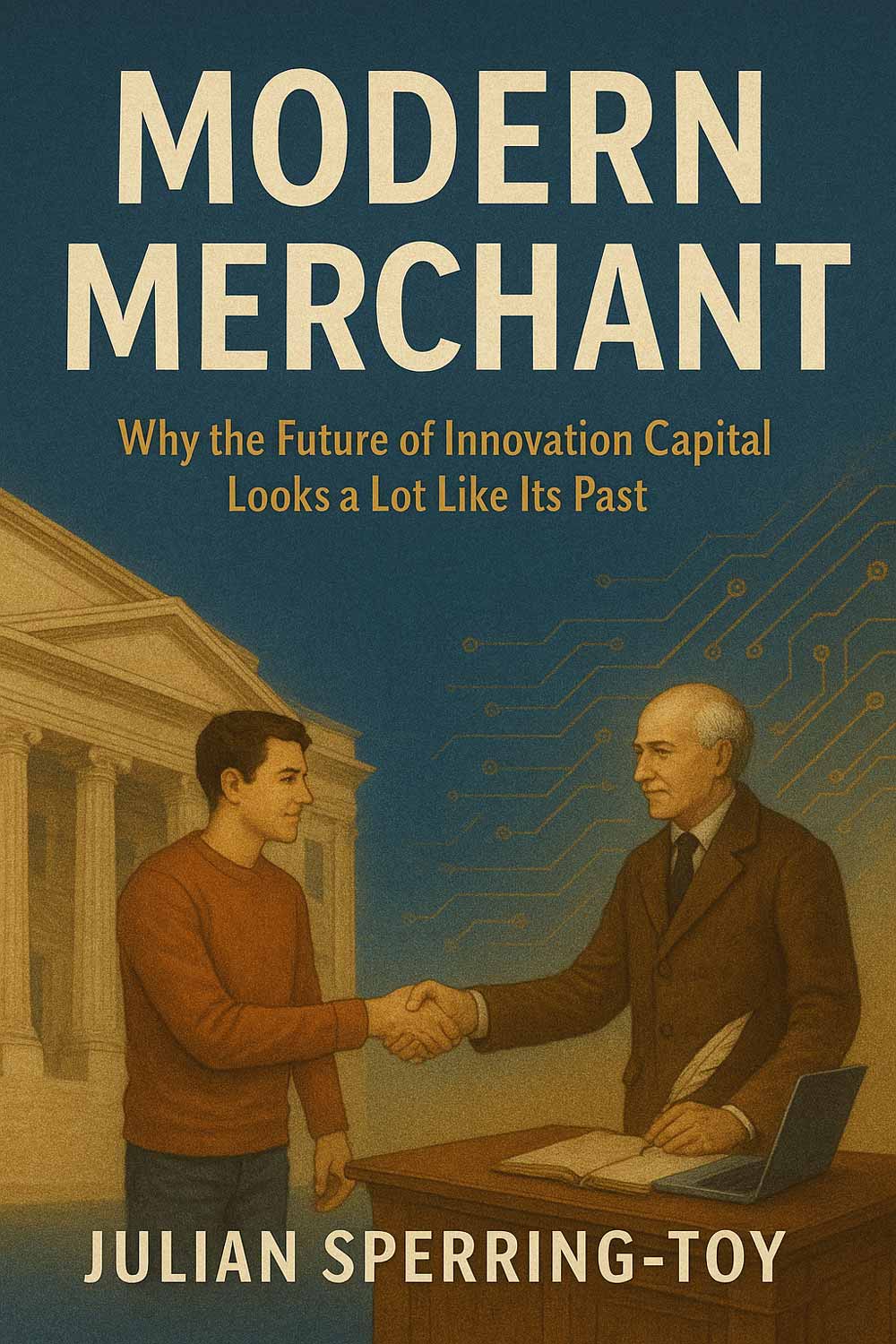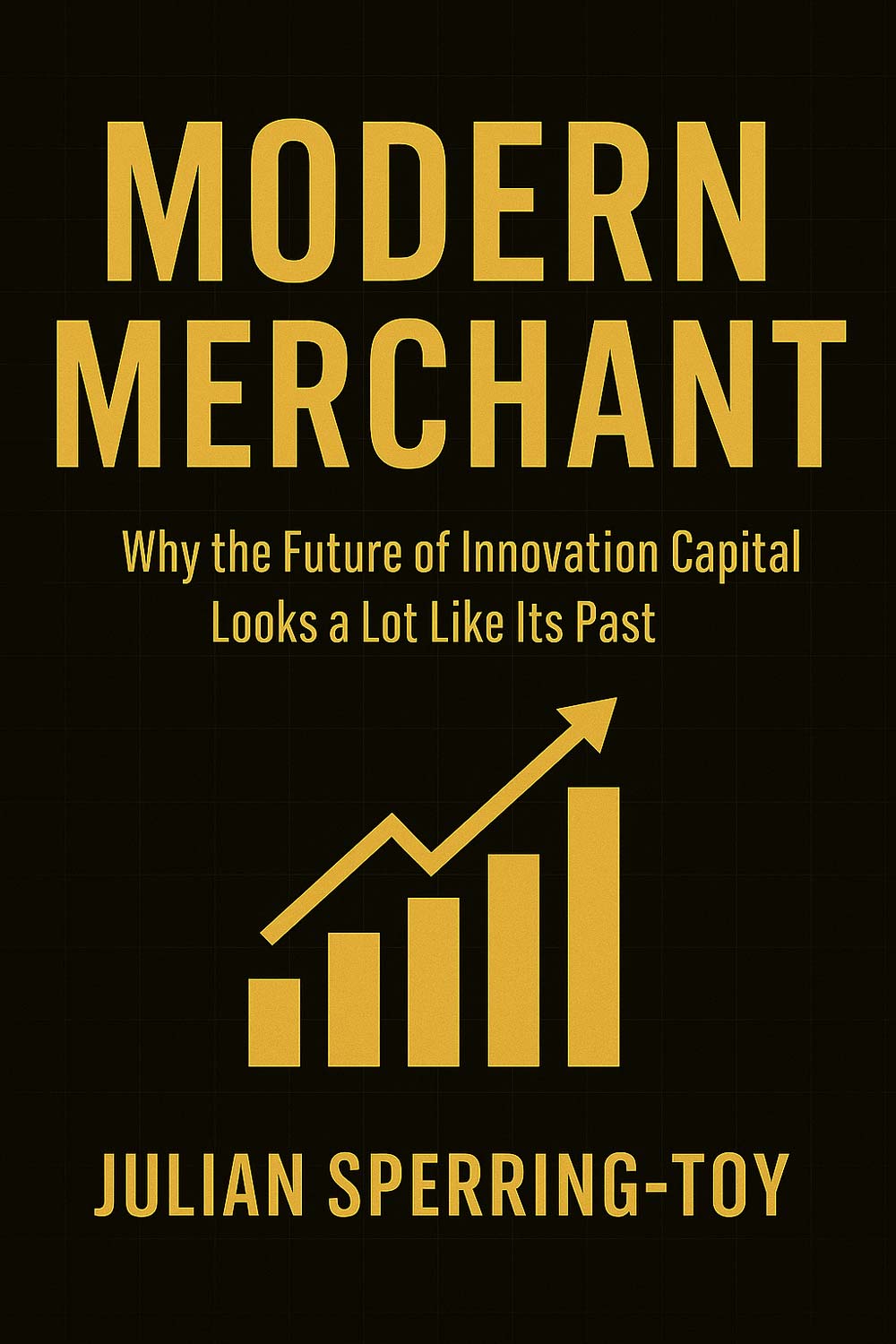Venture capital is broken.
This book explains why —
and what must replace it.
Venture capital is broken.
This book explains why — and what must replace it.
Modern Merchant
Why the Future of Innovation Capital Looks a Lot Like Its Past
A new perspective on capital, structure, and what broke inside venture finance.
- By Julian Sperring-Toy
About the Book
TL:DR - The Short Version of a Long Argument
Venture capital works.
- Capital no longer remembers what it funds.
- Founders are trapped in optics.
- LPs are locked in blind pools.
- Employees burn out. Customers disappear.
What the Book Shows
- Venture hasn’t collapsed—but trust has. Liquidity is gone. Redemption is delayed. Signals are distorted. Belief keeps the system running, but it’s belief without structure.
- Founders become performers. Capital demands clarity, confidence, and charisma—but rarely earns theirs in return.
- LPs are structurally disempowered. Ten-year lockups. Minimal transparency. No redemption rights. Capital enters—but doesn’t move.
- Employees and customers are downstream participants in a system that prioritizes narrative over durability. The product becomes the pitch. The mission gets diluted. The exit defines the story.
What Comes Next
- Capital has memory—real-time NAV, not belief-based markups
- Capital has discipline—milestone-based disbursement, not round-based ritual
- Risk is governed—by logic, not legacy
- Trust is earned structurally—through redemption rights, transparency, and consequence
- Liquidity is built in, not promised later
I’ve Seen the Pattern
This book wasn’t written in theory. It was written from pattern recognition—the kind you only earn by sitting in the quiet rooms after the headlines have moved on.
I’ve seen founders stare through me as they explain how their company was taken from them—not because it failed, but because the story fell out of sync with the system’s belief cycle.
I’ve sat with LPs watching a seven-year commitment turn into eleven years of silence, while updates arrive like ritual—manicured, templated, deliberately vague.
And I’ve watched GPs raise again without consequence, collecting fees while waiting for a unicorn to validate the cycle. This isn’t misconduct. It’s machinery.
This is what happens when a financial system forgets what capital is for—and no longer requires proof to keep operating.
I didn’t write this book to expose the system. I wrote it to design something stronger.

About Julian
Julian Sperring-Toy is a venture architect, financial strategist, and outspoken critic of modern capital dysfunction. With a background spanning private equity, startup financing, and regulatory banking systems, he has spent over two decades building and dismantling venture structures on three continents. His work fuses historical insight with system design, advocating for a return to disciplined, transparent, and trust-based financial infrastructure. Modern Merchant is his blueprint for the future of innovation finance—rooted not in disruption, but in memory.
Julian is available for interviews, podcasts, and early reader briefings

